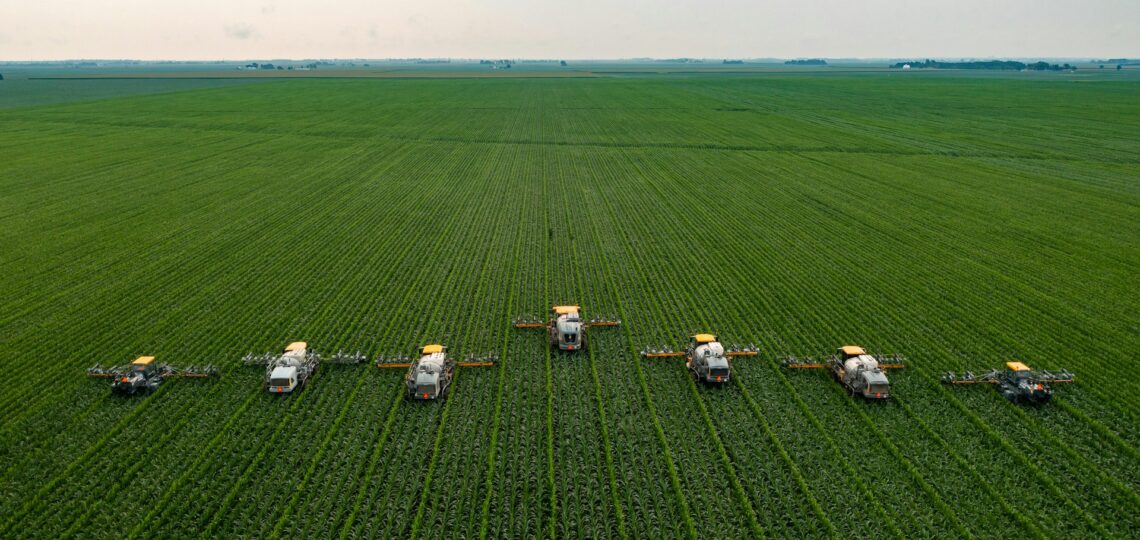
How Modern Farming Equipment Is Being Transformed by Data Analytics
Agriculture is now in the new age of digital efficiency. The use of data analytics is currently at the core of farm machinery, and is directing the design used, deployed, and maintained. Tractors, sprayers, and harvesters are not defined just by their horsepower, but rather by how well they communicate with the surrounding environment.
The farmers of today face the effects of economic stressors, unpredictable weather, and an increasing demand for sustainable farming practices. Data-driven equipment helps by providing clearer and precise information, as well as better decisions.
Table of Contents
Using Smart Technology to Advance Machinery
The farm machinery has advanced from mechanical tools that were once used for basic tasks to modern systems that collect and process information. Sensors in equipment today provide a variety of variables, ranging from engine performance to the level of soil moisture. The data is converted into recommendations that farmers can implement to plan their harvesting, fertilising, and planting more precisely.
They help to reduce wasteful inputs and boost field efficiency. GPS systems permit centimetre-level guidance, allowing machinery to take the most efficient route and avoid overlaps and missed sections.
Companies like Agriteer aid farmers in implementing these methods. They have expertise in digital tools as well as a strong regional presence they provide high-performance solutions across different scales of farming.
Field Operations and Analytics in Real Time
Field equipment is now able to provide continuous analysis throughout operations. This changes the way the decisions are taken. Soil composition, health of the crop, as well as environmental data can be analyzed while the machine is running.
A single of the more effective technologies is variable rate application. Instead of distributing an equal amount of fertilizer or seed over the entire field, machines can now adjust the inputs to meet the specific needs of each area. This helps ensure efficient crop growth while using fewer resources.
Yield mapping plays an important part. When crops are harvested, equipment monitors how much is taken from each area in the fields. Farmers utilize this information to determine which areas require improvement and help them plan specific interventions for the coming season.
Weather integration is a further layer of protection. Machines can get forecasts and plan their activities based on optimal conditions. This can reduce the risk of damage to crops or waste because of mistimed activities.
Prescription maps direct input applications by utilizing soil readings of the present and previous yield data. Fertiliser, for instance, is only delivered to zones that show the need. The machines can limit overuse in areas already balanced.
Telematics-Based Fleet Management
Data integration has revolutionized the way equipment fleets are run. Farmers are now able to monitor the location, hours of use, and performance of every machine via a central database. This simplifies the logistics process and avoids delays caused by insufficient coordination.
Features for tracking fuel usage aid in reducing costs and emissions. Systems analyze the use of fuel in different field conditions, and highlight the areas for improvement. Changes to the operator’s behavior or machine settings can be sufficient to cut down on the consumption of fuel significantly.
The routines of servicing have evolved away from the traditional intervals based on time. Diagnostics onboard allow maintenance that is based on actual usage and wear. This avoids the need for unnecessary maintenance and lowers the chance of breakdowns that are unexpected breakdowns.
The data on usage helps investors make better decisions by identifying overused or excessively used equipment. This ensures that the appropriate tools are in place without investing in unneeded machinery.
Security is a top priority with the increase in connectivity. Manufacturers have improved the security of data, which has helped to protect sensitive operational data.
Sensors monitor parts like the engines and hydraulic systems, and electronic components. When data on performance begins to diverge from norms, Machine learning systems can identify potential issues. These warnings early on allow farmers to plan repairs before major problems begin to develop.
Checks for the availability of parts can now be integrated within the software. If servicing is required, the machine will be able to determine the parts required and if they’re in inventory. This helps speed repairs and helps keep machines at the ready at times when they’re most needed.
Enhancing Equipment Design Using Field Data
The field-generated data is changing the way agricultural equipment is constructed. Engineers evaluate real-world performance in order to inform future designs with a focus on durability, accuracy, and user-friendliness.
Operator behavior also affects the design of interfaces. The insights gained from the real-time use of machines can improve the layout and functionality of controls. This decreases fatigue and boosts overall efficiency.
Manufacturers are now introducing modular systems that permit modifications without requiring a complete replacement of the machine. This allows farmers to stay up-to-date with the latest technology while also making their budgets more efficient.
The Future of Data-Driven Devices
Automated machinery is growing quickly. Tractors are now able to complete complicated tasks with no constant input from the operator. They make use of GPS as well as computer vision in order to ensure that they navigate with accuracy and carry out repetitive tasks with accuracy.
Aerial photography using satellites and drones is a great complement to gathering data from ground levels. The combination gives a full perspective of the conditions in the field and allows equipment to make educated decisions regarding application and movements.
Edge computing allows machines to handle data on a local basis. With less dependence on networks that are external networks, machines can make immediate adjustments according to live conditions. This is especially beneficial in situations where fieldwork is impacted by soil or weather fluctuations.
Encouragement of the Adoption of Smarter Equipment
The latest technology is more than just a new purchase. It requires expertise, along with guidance and constant assistance. Regional experts help farmers match technology to their needs. They also offer practical assistance in the installation and maintenance.
If you are considering upgrading your digital equipment, this support could be the difference between failure and a successful upgrade. Experts in equipment with local expertise are aware of the challenges and conditions particular to their area. Their guidance is often crucial to maximizing the ROI on investment.
Final Thoughts
Data analytics is changing the way equipment used in agriculture is constructed and operated. The machines that were once operating independently are now integrated into systems that are able to collect and process data continuously.
Farms can benefit from this, gaining greater control, greater efficiency, and more long-term benefits. From less waste and improved performance of the crop to improved maintenance and design input, this has a wide-reaching impact.

